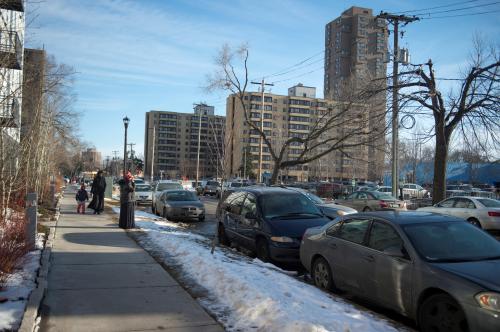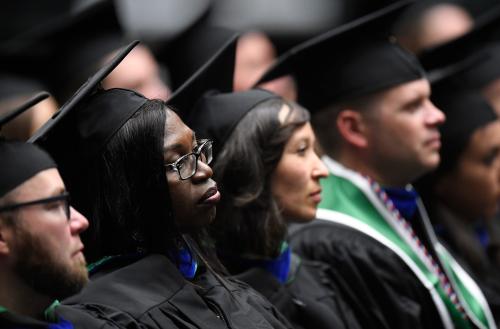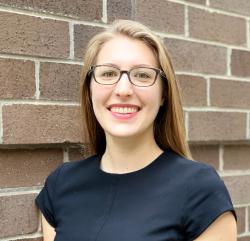If you want more content like this, subscribe to our newsletter.
This week in Class Notes:
-
- Reforming college admissions to boost representation of low and middle-income students could substantially reduce income segregation between institutions and increase intergenerational mobility.
- The Alaska Permanent Fund Dividend increased fertility and reduced the spacing between births, particularly for females age 20-44.
- Federal judges are more likely to hire female law clerks after serving on a panel with female judges.
- Our top chart shows that middle-class incomes have grown at a slower rate than upper-tier incomes over the past five decades.
- Danielle Douglas-Gabriel describes the challenges Historically Black Colleges and Universities face when providing financial resources to their students.
- Finally, check out Jenny Schuetz’s new piece on how expanding the use of longer-term leases could help make renting a more stable choice for middle-income households.
The determinants of income segregation and intergenerational mobility: Using test scores to measure undermatching
College students are highly segregated by parental income, with more selective institutions having much higher shares of those from affluent families. In large part, this is because applicants from richer backgrounds have better qualifications, such as a high score on the SAT or ACT. But in this paper, Chetty and Friedman and their colleagues show that this does not explain all of the gap. Specifically, they find that equalizing application, admission, and matriculation rates across parental income groups conditional on test scores would reduce segregation substantially, primarily by increasing the representation of middle-class students at more selective colleges.
However, it would have little impact on the fraction of low-income students at elite private colleges, because there are so few students from low-income families with sufficiently high SAT/ACT scores. But colleges could go further and give a sliding-scale preference to low and middle-income students in the application and admissions process similar to that implicitly given to legacy students at elite private colleges. The authors estimate this would eliminate differences in parental income distributions across colleges and reduce intergenerational income persistence among college students by 25%.
Economic incentives surrounding fertility: Evidence from Alaska’s Permanent Fund Dividend
Do unconditional cash transfers influence fertility decisions? Kelly et al. use the 1982 introduction of the Alaska Permanent Fund Dividend (or APFD) to address this question. They find that the APFD led to a 13% increase in the fertility rate for women between 15 and 44 years of age. These estimates support the theory that positive income shocks increase fertility, and that policies aimed at increasing income ought to take into account likely fertility consequences and their implications for economic growth.
Professional interactions and hiring decisions: Evidence from the Federal Judiciary
Appellate court cases are typically heard by panels of three judges, randomly selected from a pool of appellate court justices and district court justices. Because appellate judges do not choose the cases that come before their courts or the colleagues with whom they hear these cases, their likelihood of working with female colleagues on cases is effectively random. Battaglini et al. examine the effect of hearing cases alongside female judicial colleagues on the probability that a federal judge hires a female law clerk. Using a unique dataset containing aggregated federal case records from 2007-2017 and judicial hiring information, the authors find that a one standard deviation increase in the fraction of co-panelists who are female increases a judge’s likelihood of hiring a female clerk by 4 percentage points. This finding suggests that increases in the diversity of the upper rungs of a profession can shift attitudes in a way that creates opportunities at the entry level of a profession.
Top chart
This week’s top chart shows that middle-class incomes have grown at a slower rate than upper-tier incomes over the past five decades. Between 1970 to 2018, the median middle-class income increased from $58,100 to $86,600 – a gain of 49% – while the median income for upper-tier households grew by 64% from $126,100 to $207,400. (Note that Pew use what we consider a less-than-optimal definition of the middle class, but their basic point holds).

Choice opinion
“Historically black colleges, after generations of inequitable funding, lack substantial endowments to provide generous scholarships but serve a population in dire need of financial support. Without that assistance, their students rely heavily on loans that can exacerbate racial wealth disparities by making it more difficult to save and invest. The financial instability also places students at great risk of dropping out. Even relatively wealthy black schools, such as Howard University or Spelman College, face the challenge of educating a large number of disadvantaged students with a fraction of the budget of comparable predominantly white colleges” writes Danielle Douglas-Gabriel in The Washington Post.
Self-promotion
Since the Great Recession, the share of U.S. households who rent their homes has increased from 32% to 36%. Rents have risen faster than incomes, and nearly half of renter households now spend more than 30% of their income on housing. This increasing level of stress faced by middle-class renters has sparked heated political debates about policy changes that could help, including just-cause eviction laws and national rent control. However, in her new piece “Offering renters longer leases could improve their financial health and happiness”, Jenny Schuetz argues that the solution to this problem may be simpler than we think – expanding the use of longer-term leases.
Call for papers: Conference on automation, training, and the middle class
The Future of the Middle Class Initiative invites researchers to submit original research papers for the following conference: “Conference on automation, training, and the middle class”. Follow this link for details.







Commentary
Class Notes: Income segregation, the value of longer leases, and more
Wednesday, February 26, 2020